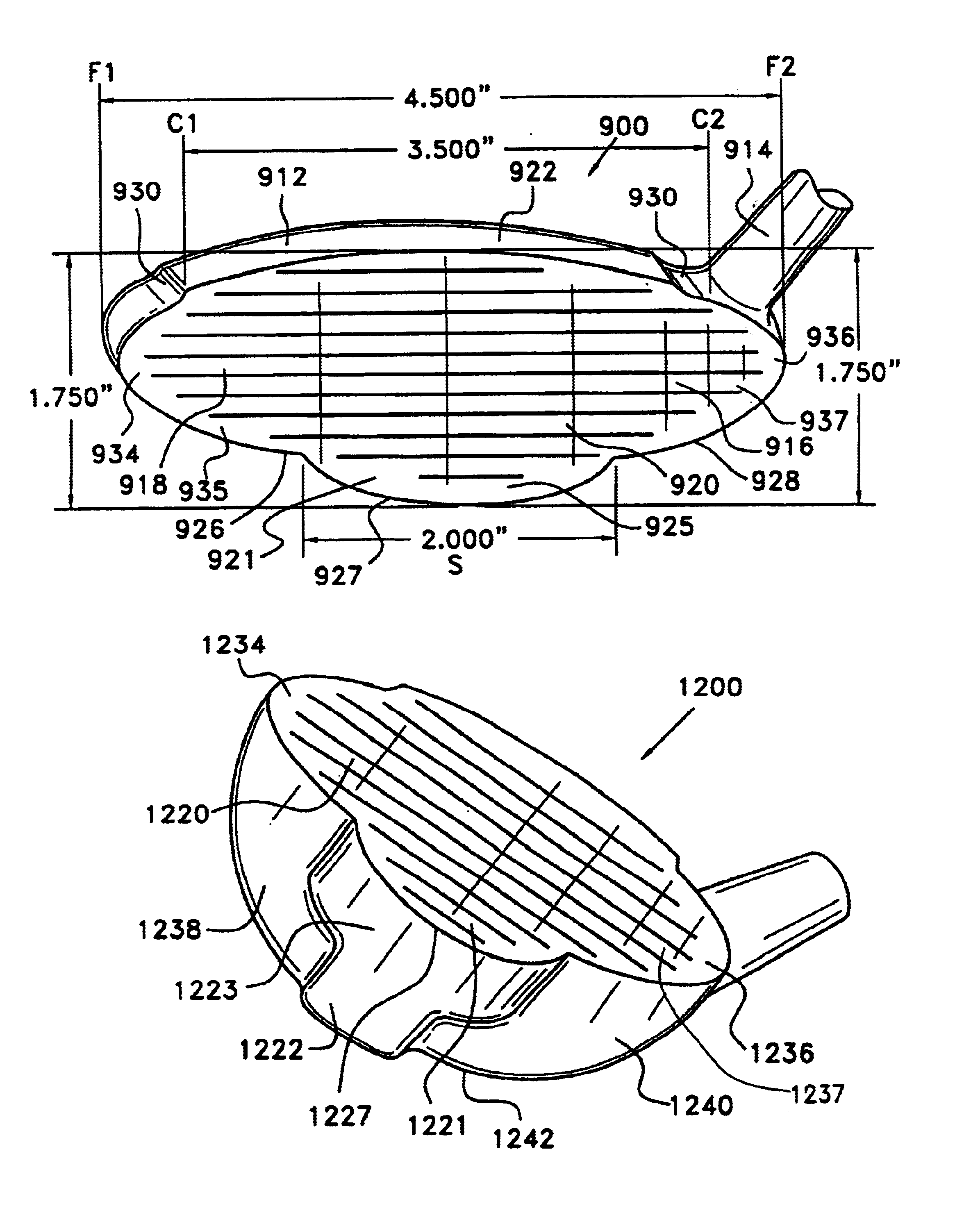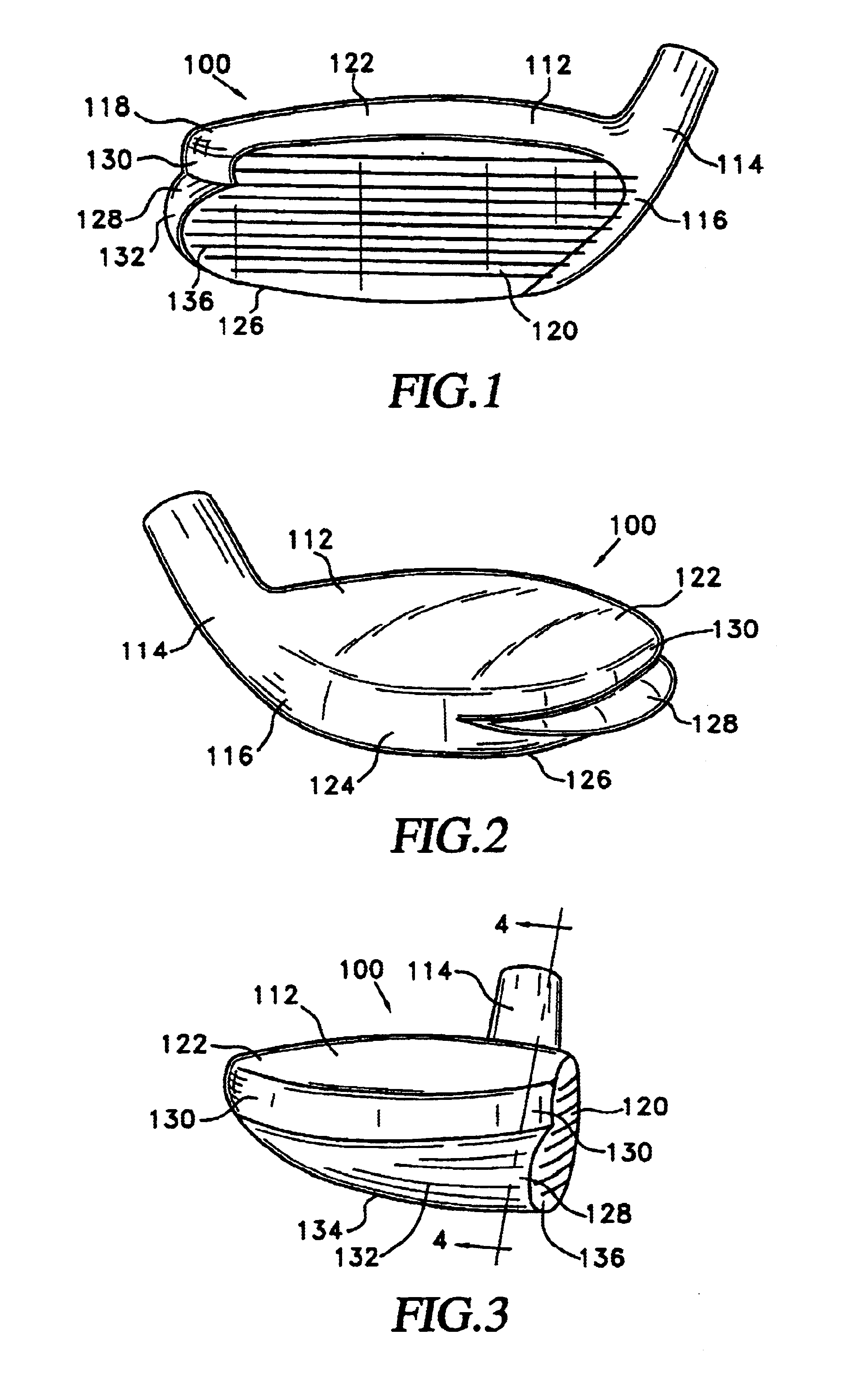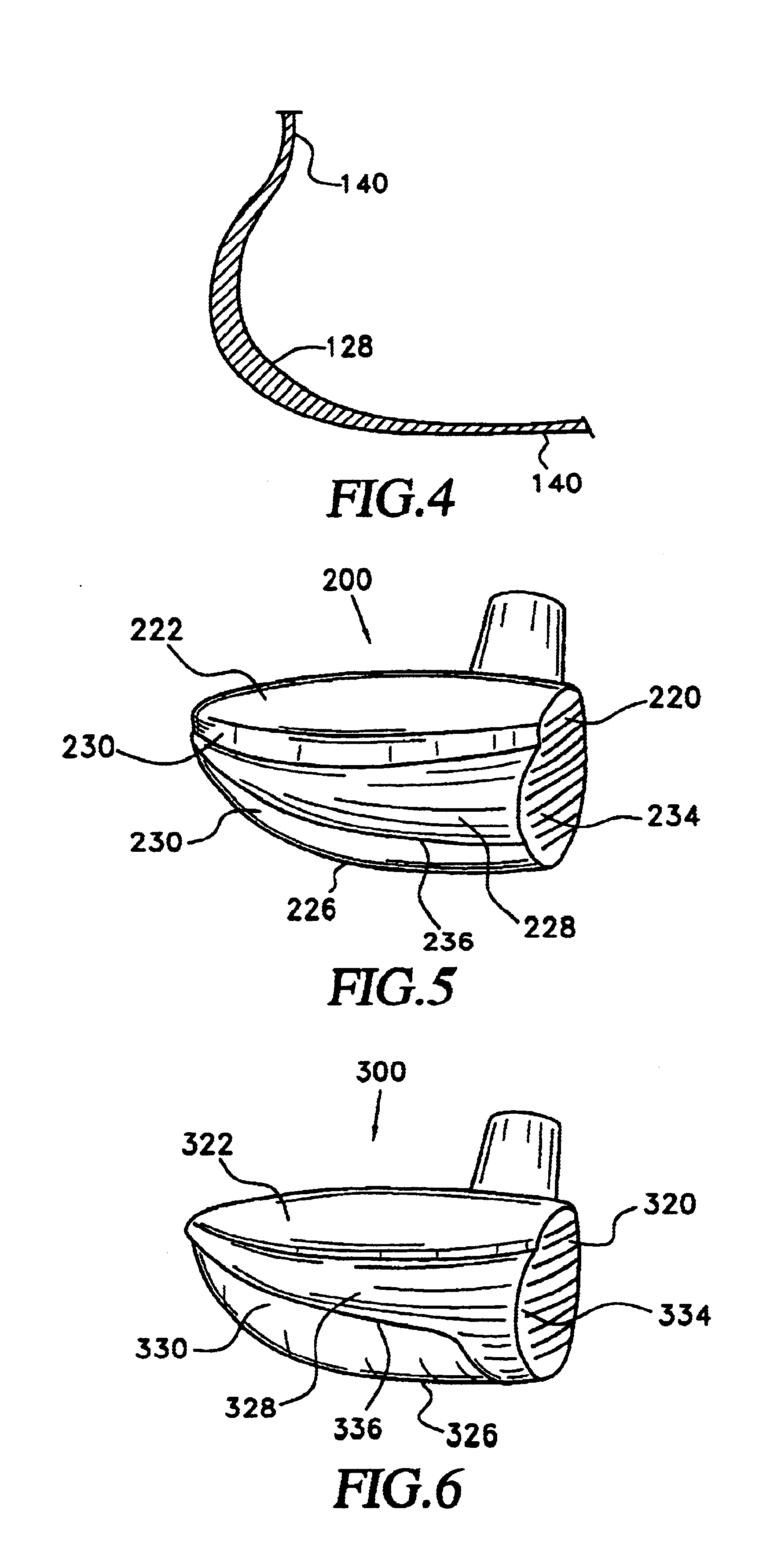Metalwood type golf clubhead having expanded sections extending the ball-striking clubface
a golf clubhead and ball-striking technology, which is applied in the field of golf clubheads, can solve the problems of reducing the critical moment of inertia of the clubhead, reducing the accuracy of the clubhead, and reducing so as to improve the critical moment of inertia, reduce torqueing, twisting and knocking, and improve the stability of the clubhead. the effect of control
- Summary
- Abstract
- Description
- Claims
- Application Information
AI Technical Summary
Benefits of technology
Problems solved by technology
Method used
Image
Examples
first embodiment
FIGS. 1-4 show a golf clubhead 100 in accordance with the present invention including a clubhead body 112, hosel 114, heel 116, toe 118, ball-striking clubface 120, upper surface 122, rear surface 124 and bottom sole 126. A single reinforcing and stabilizing member 128 having an aerodynamic shape, is located coincident with or adjacent to the bottom surface 126 of the clubhead 100 and which wraps partially around the peripheral sides 130 of the clubhead 100. The member 128 includes upwardly curving, convex parabolic surface 132 including a lower surface 134 extending upwardly and coincident with the bottom sole 126 of the clubhead 100. In this embodiment, the member 128 has a front ball-striking surface 136 which is laterally coincident with the ball-striking clubface 120, thereby enlarging the ball contact surface of 120 and providing a greater margin for error when golf balls are struck away from the center of the ball-striking striking clubface 120 toward the toe 118 of the clubh...
second embodiment
FIG. 5 illustrates a golf clubhead 200 of the present invention. In this embodiment a reinforcing and stabilizing member 228 includes a ball-striking surface 234 parallel to clubface 220 with a non-coincident bottom surface 236 is centrally located on the side wall 230 of the clubhead 200 approximately midway between the crown surface 222 and the bottom 226 of the clubhead 200.
third embodiment
FIG. 6 illustrates a golf clubhead 300 of the present invention wherein a reinforcing and stabilizing member 328 includes a ball-striking surface 334 coincident with clubface 320. The reinforcing and stabilizing member 328 has a non-coincident lower surface 336 above the bottom surface of the club head 300. The reinforcing and stabilizing member 328 is located toward the top surface of side wall 330 adjacent the crown surface 322 of the clubhead 300.
PUM
 Login to View More
Login to View More Abstract
Description
Claims
Application Information
 Login to View More
Login to View More - R&D
- Intellectual Property
- Life Sciences
- Materials
- Tech Scout
- Unparalleled Data Quality
- Higher Quality Content
- 60% Fewer Hallucinations
Browse by: Latest US Patents, China's latest patents, Technical Efficacy Thesaurus, Application Domain, Technology Topic, Popular Technical Reports.
© 2025 PatSnap. All rights reserved.Legal|Privacy policy|Modern Slavery Act Transparency Statement|Sitemap|About US| Contact US: help@patsnap.com



